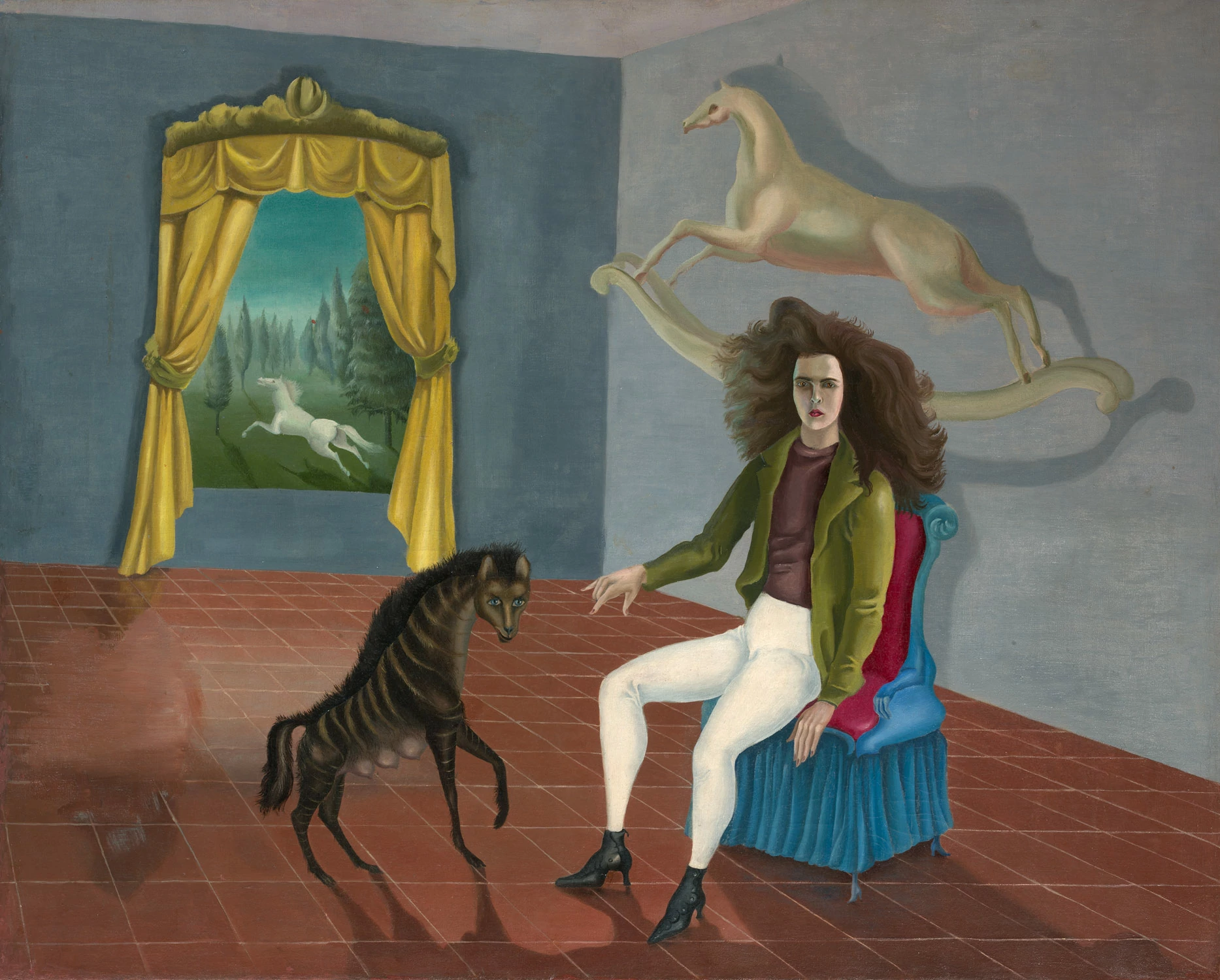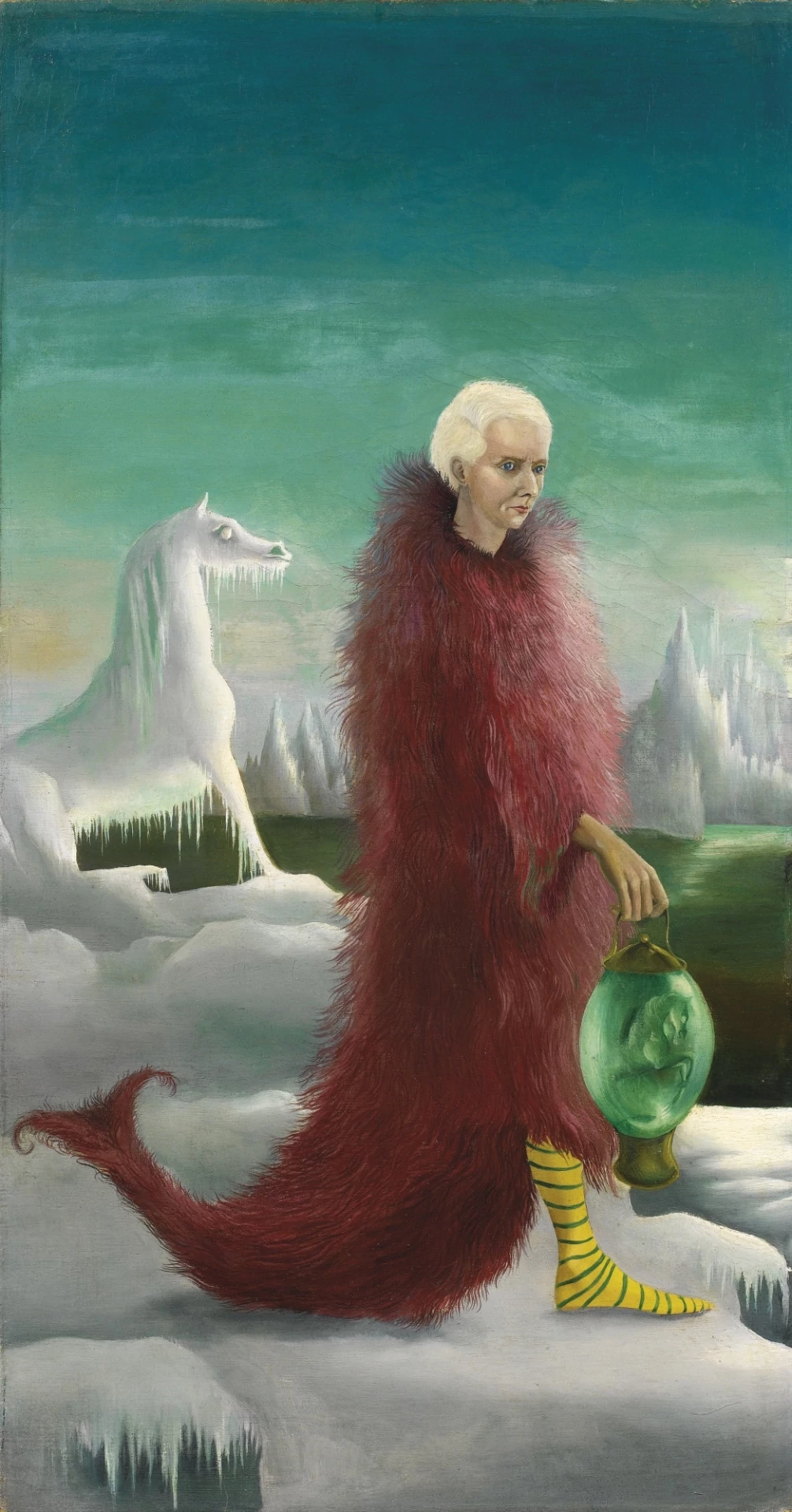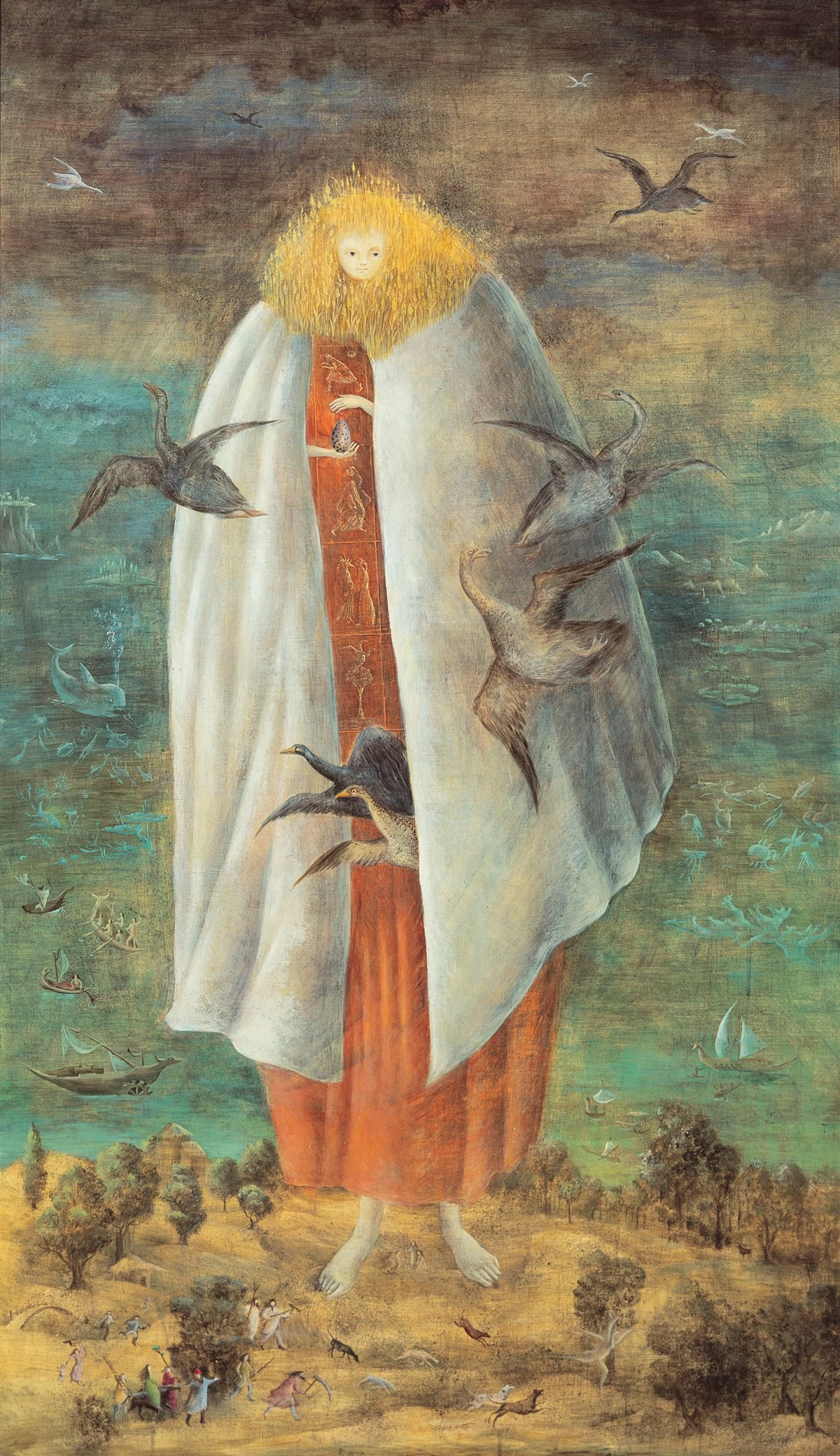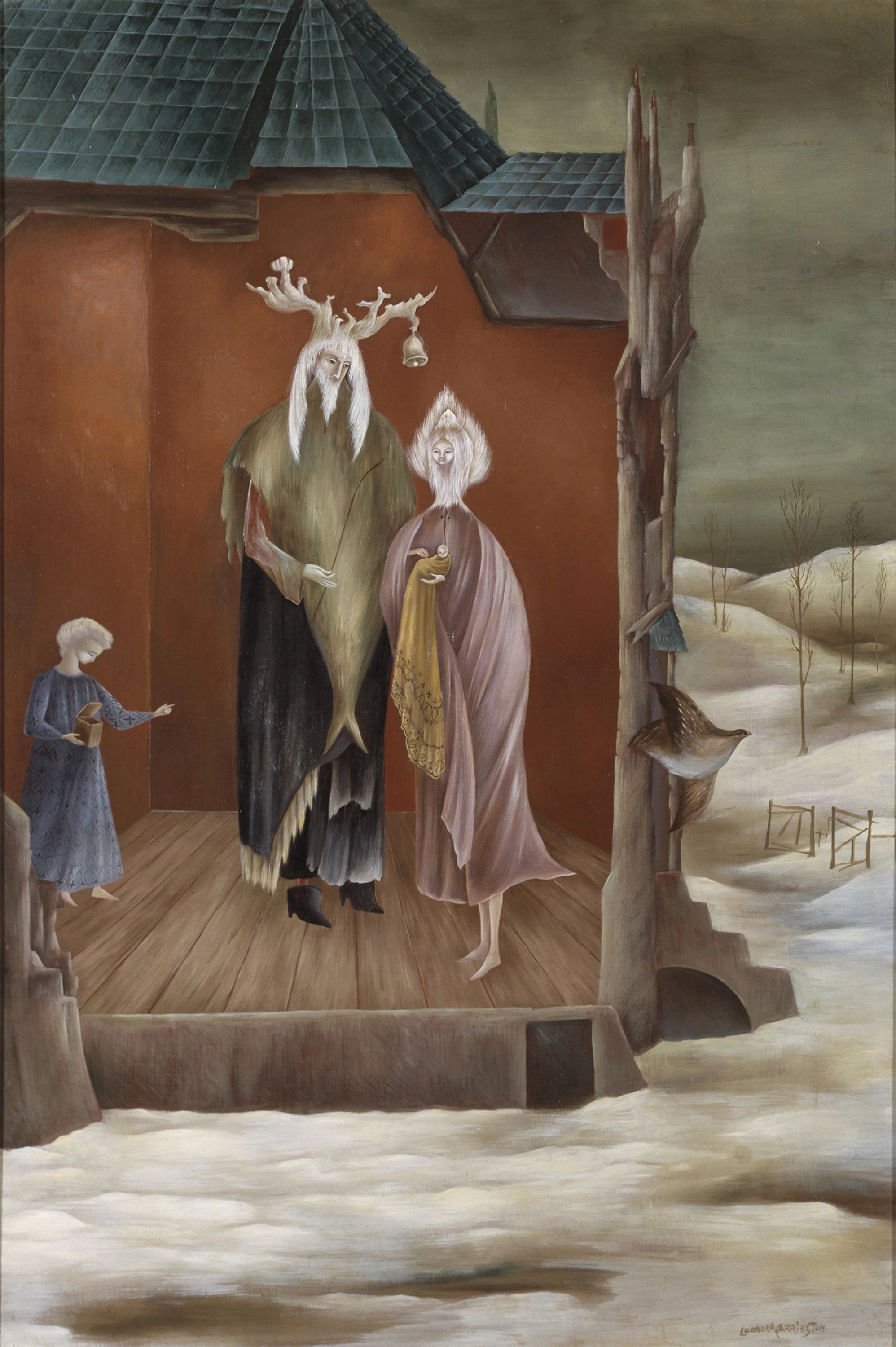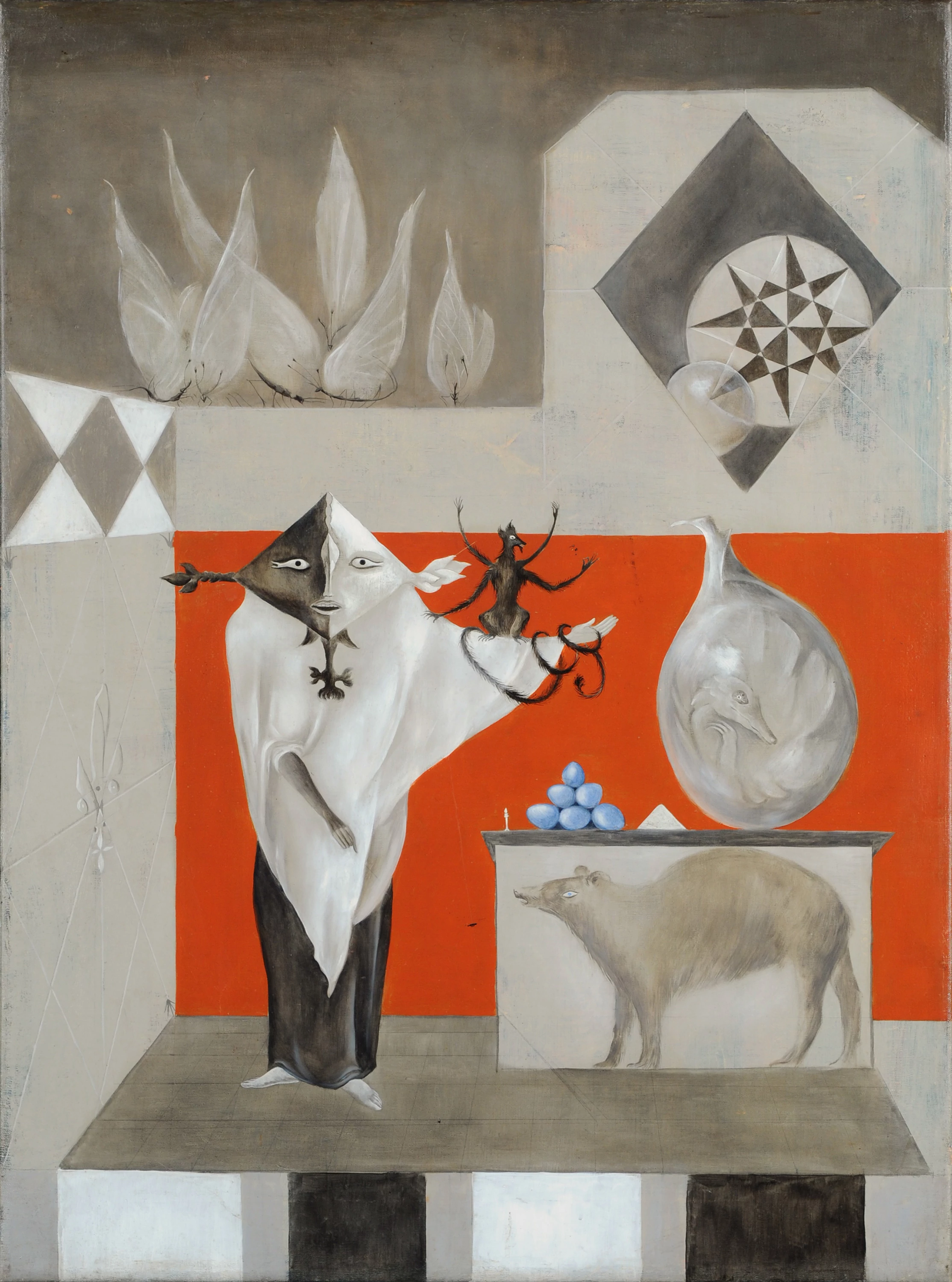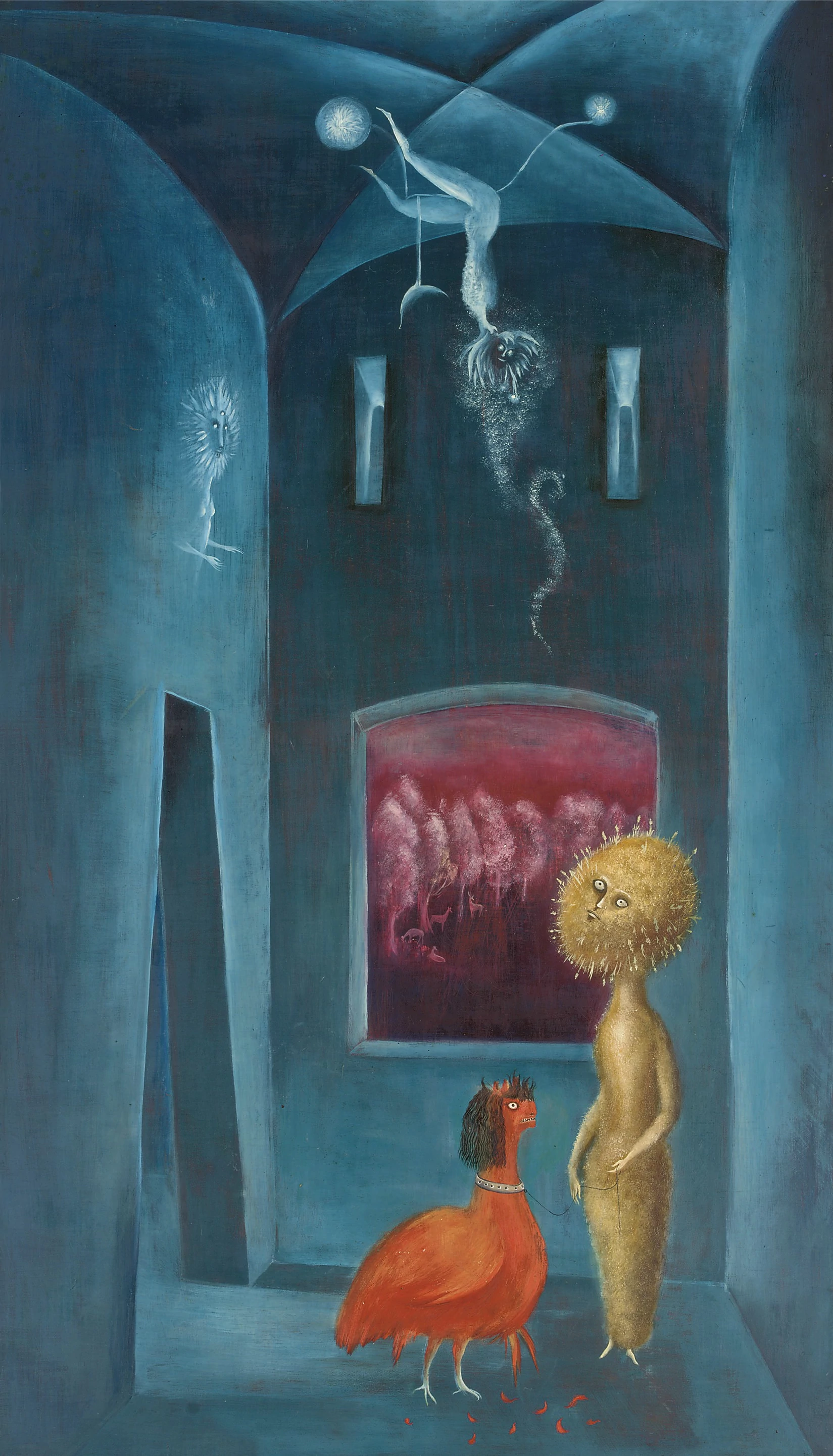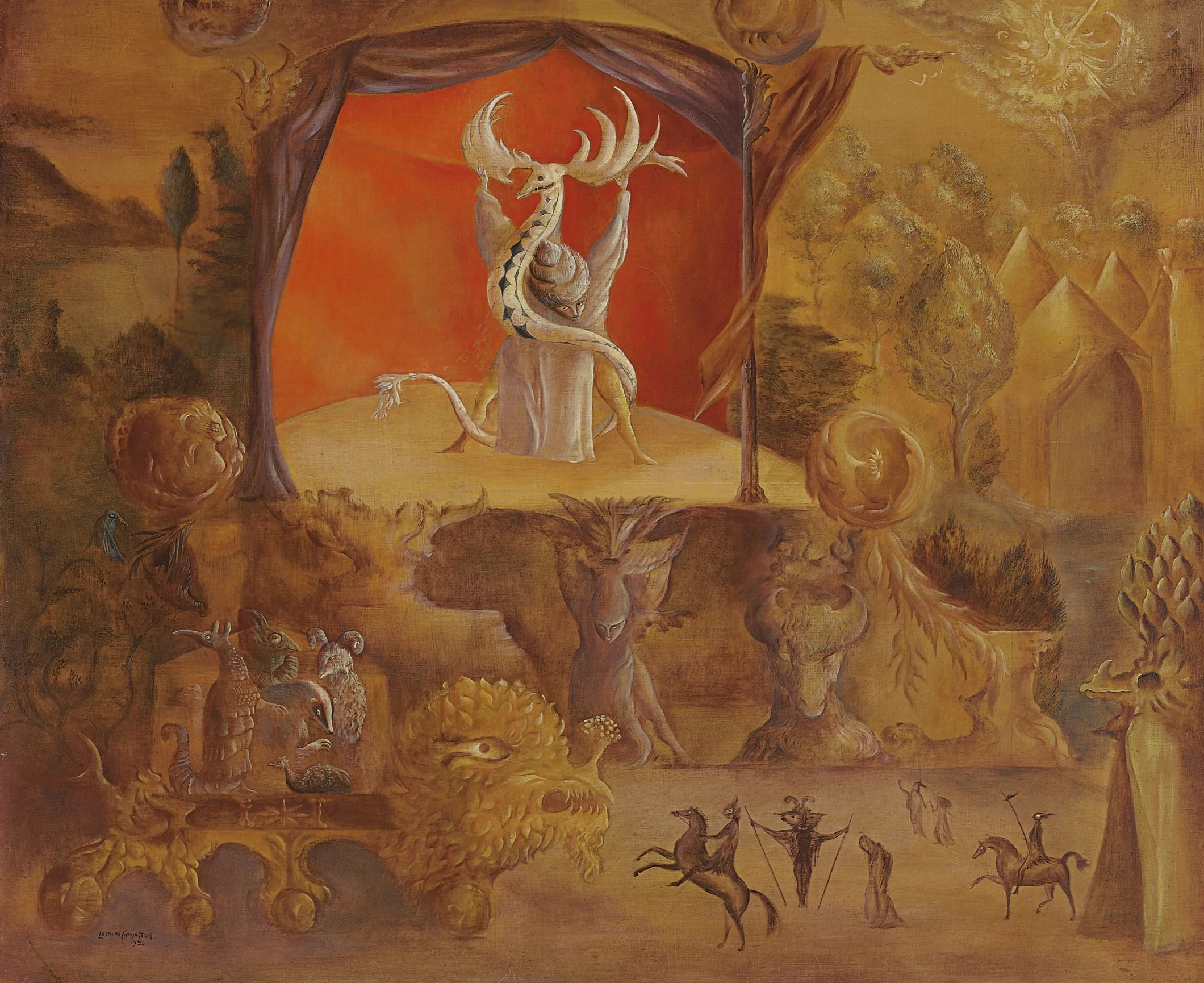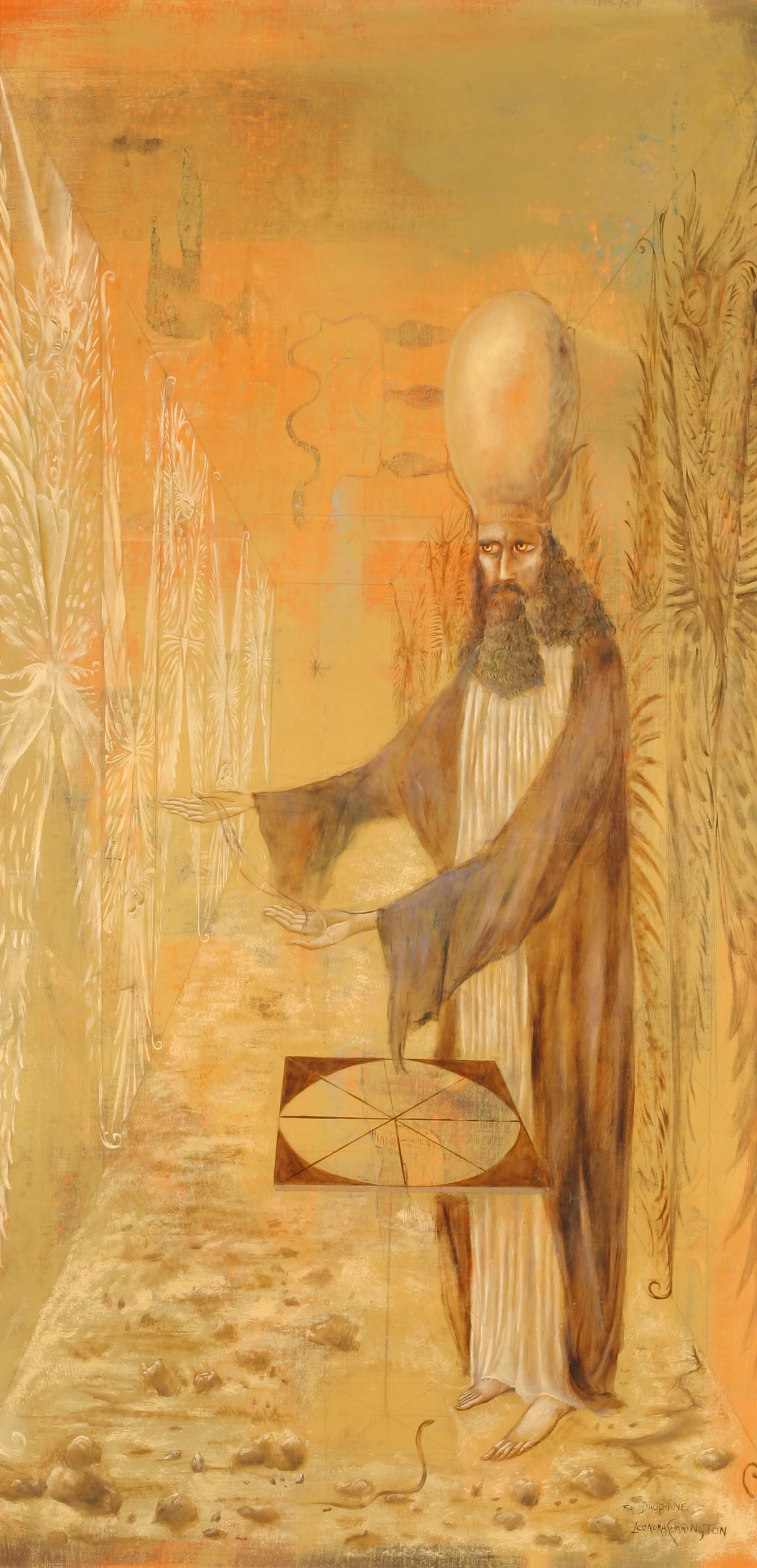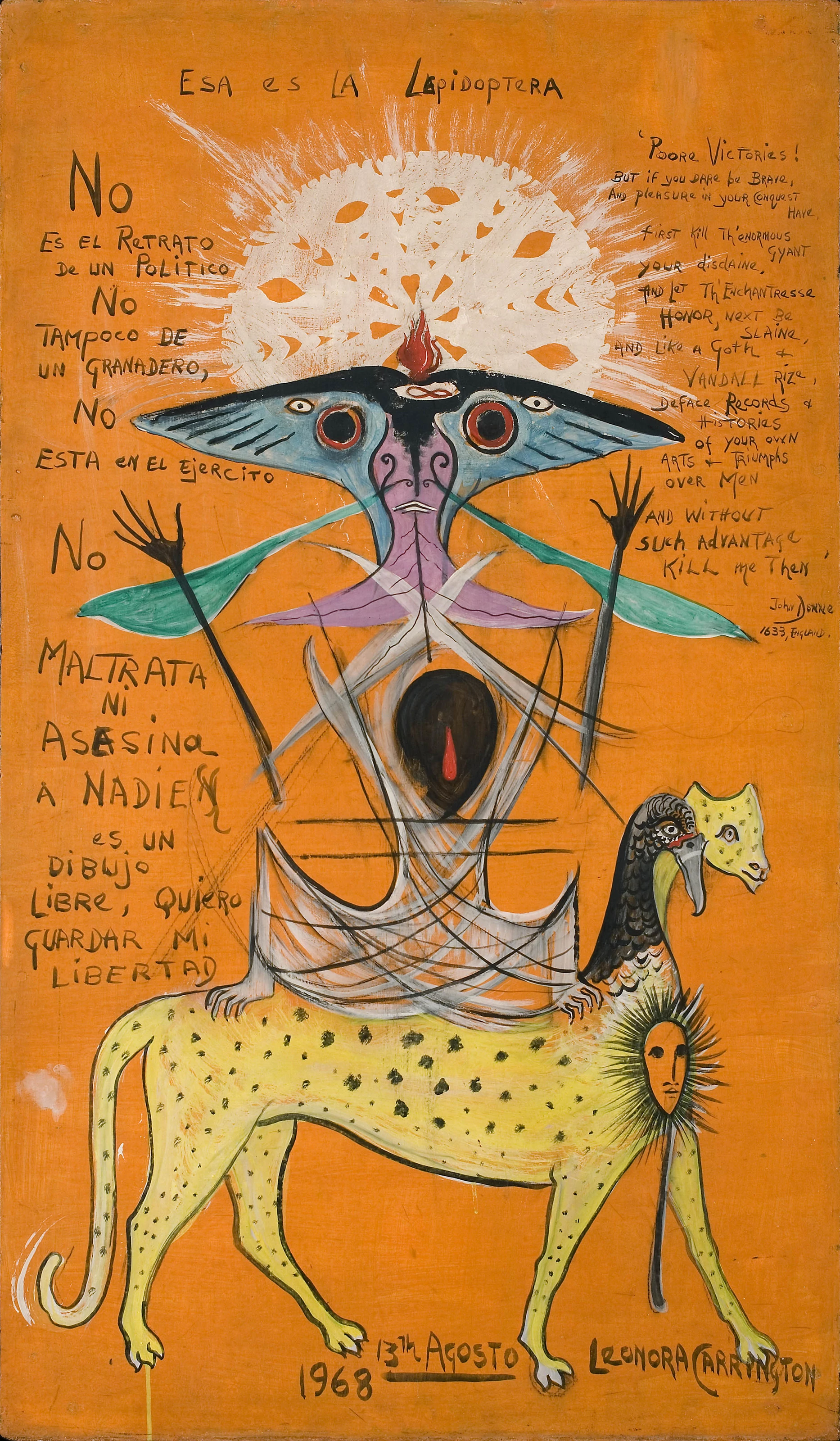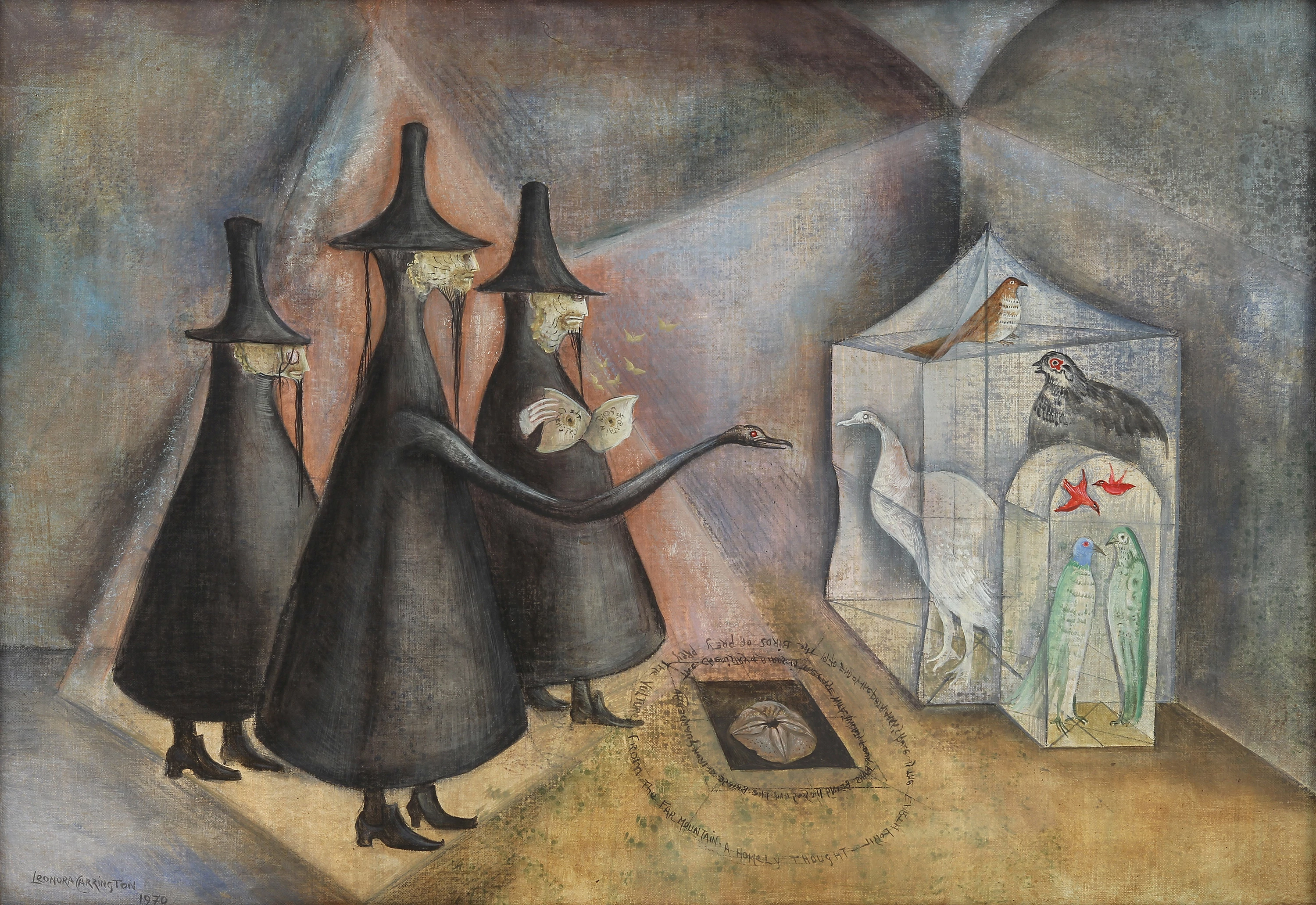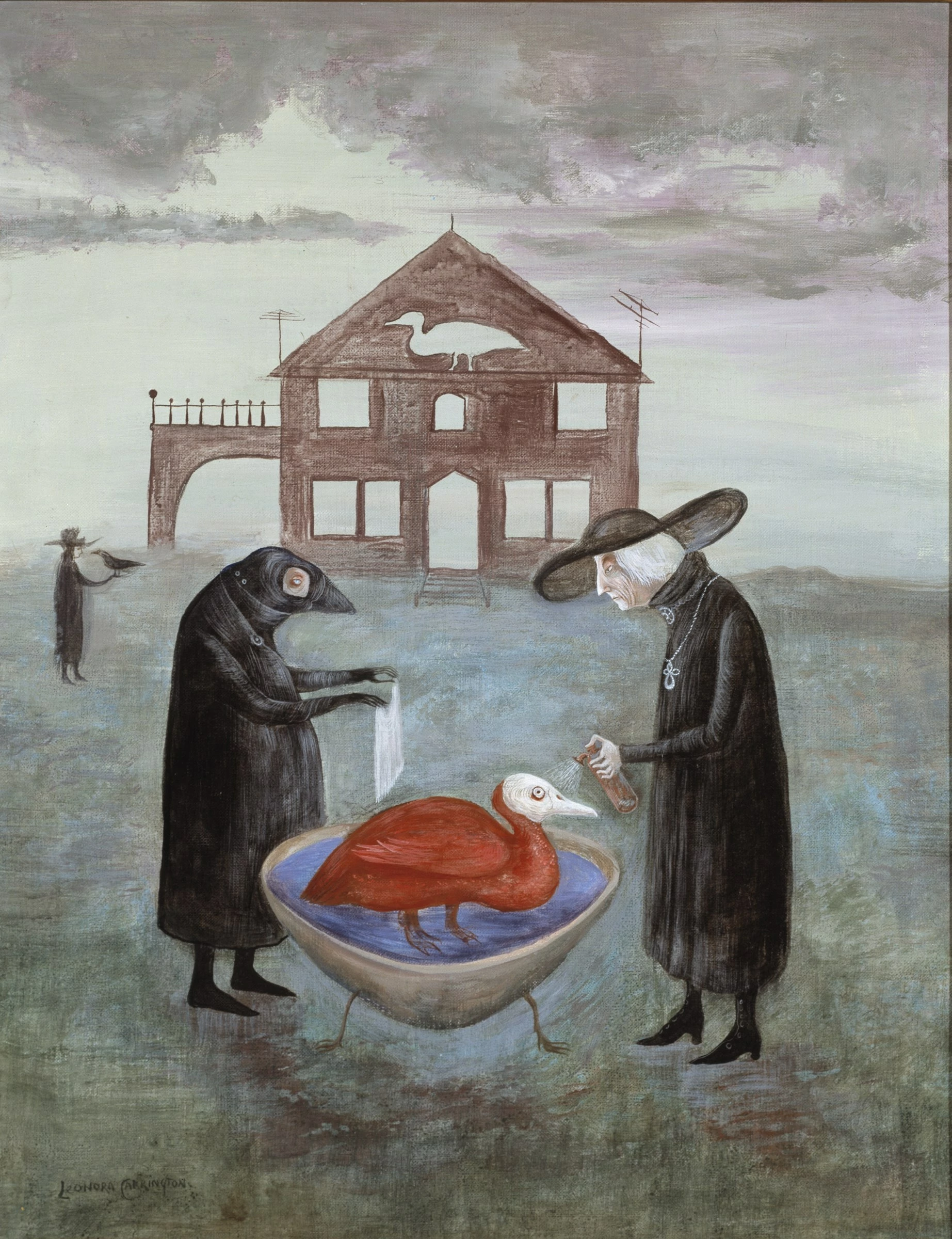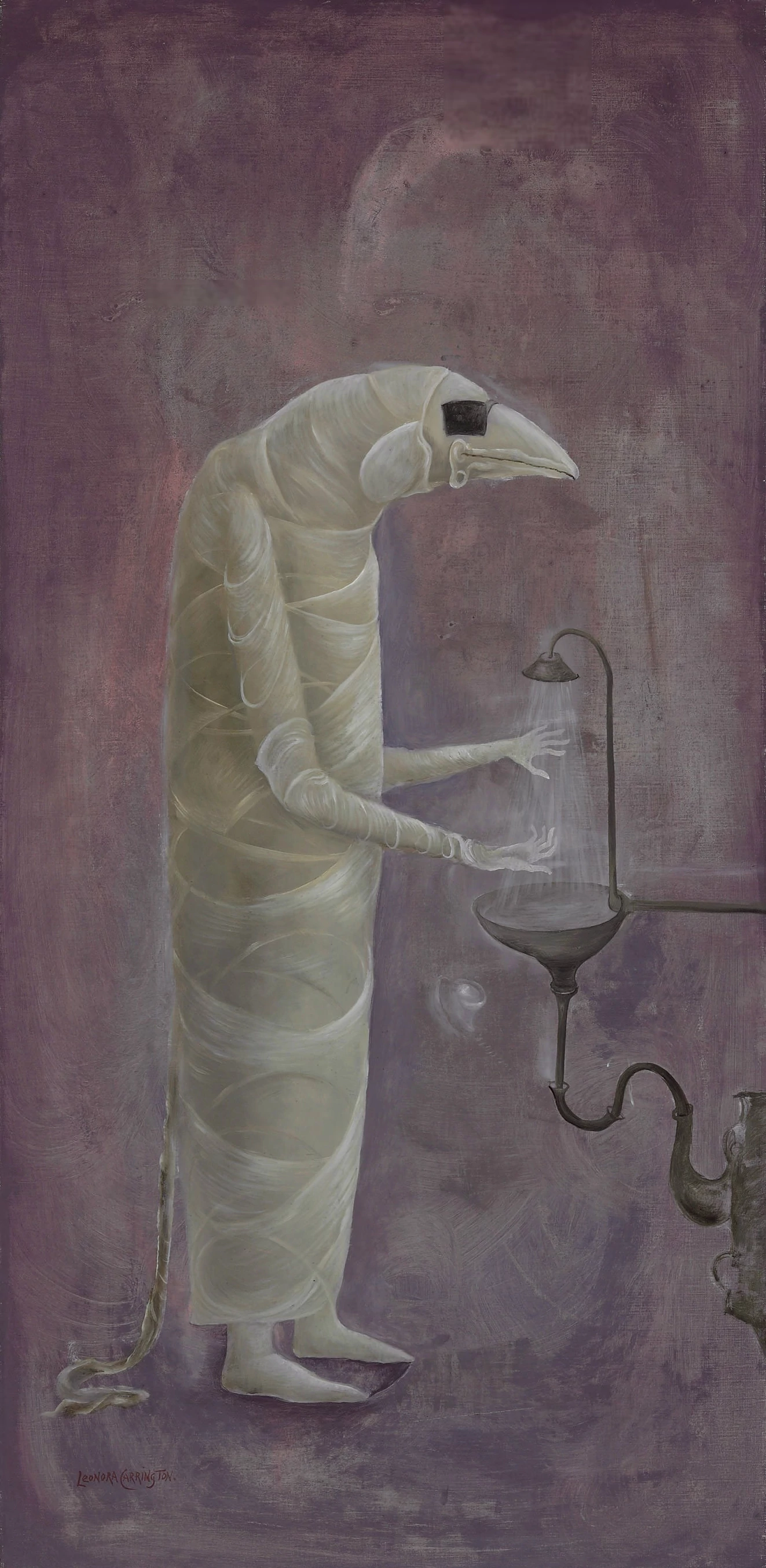Leonora Carrington
"I'm not anyone's muse"
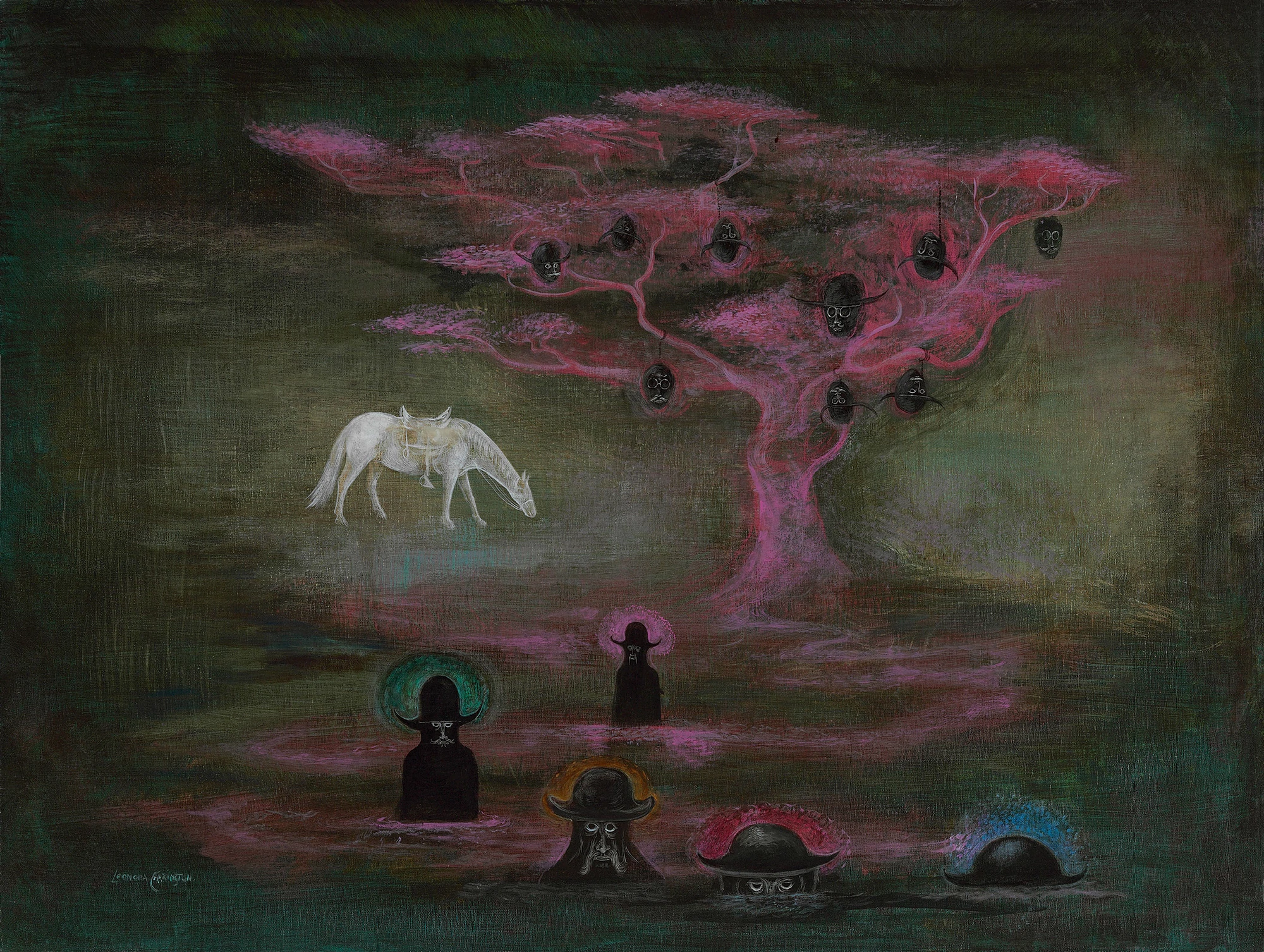
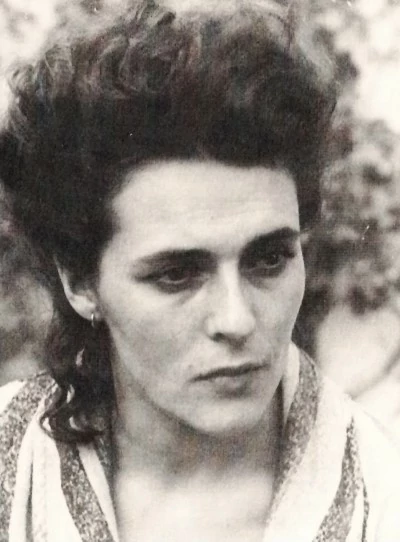


Leonora Carrington may as well have lived three lifetimes. As a child, Carrington was kicked out of two schools, as a teenager, she read Huxley and studied art. At 19, she visited the International Surrealist Exhibition and made a plan.
The International Surrealist Exhibition in London was the pinnacle of the movement. Argumentative factions of surrealist writers and artists from England, France, Belgium, Scandinavia and Spain put aside their competing philosophies for a group show of more than 70 artists, including Giorgio de Chirico, Marcel Duchamp, Paul Klee, Salvador Dalí and Pablo Picasso. It was a tour de force, and a shot of pure adrenaline for young Leonora Carrington. Carrington was studying art at the exclusive Ozenfant Academy in London, and at the exhibition one artist’s work arrested her attention. The German artist Max Ernst showed 15 paintings and one plaster sculpture, and Carrington was obsessed.
A year later, Carrington planted herself at a party in London where Ernst was visiting from Paris, and the two artists connected immediately and powerfully. Carrington dropped everything and moved to France with Ernst, who divorced his wife. Ernst was 25 years older than Carrington, and an established member of the surrealist inner circle. Ernst was her entre into the aging boys-club of surrealism, but Carrington held her own with Picasso, Dalí and Miro, once telling the Guardian “I wasn’t daunted by any of them.” It was during this time that Carrington’s style began to mature. While her surrealist friends obsessed over Freudian psychology, she delved into mythology, animism, and female sexuality. Carrington’s first truly surrealist artwork, The Inn of the Dawn Horse is an androgenous self-portrait, with a hyena and a white horse that appeared over and over in her later writing and artwork—her psychic guides.
But in 1940 WWII was bulldozing Europe, and Germany’s invasion of France scattered the art scene. Ernst was detained by the Gestapo for creating ‘degenerate’ art. Though Ernst was later smuggled out of Europe by the American art collector Peggy Guggenheim, Carrington was left to fend for herself. Distraught, she fled to the British Embassy in Madrid, where her anxiety and loss threw her into a delusional state. Her parents were contacted, and they recommended her for hospitalization.
This was a very bad time for Carrington. Imprisoned in a Spanish psychiatric hospital, she was treated with the newly-minted ‘electroshock therapy’ and the now-banned seizure-inducing drug Cardiazol. From the Spanish hospital, Carrington was moved to Lisbon, where her father sent a business contact to transport her to a sanatorium in South Africa. But while waiting for her boat to arrive, Carrington slipped away from her handlers and took a taxi to the Mexican embassy, where her friend Renato Leduc, worked as a diplomat. Leduc took drastic measures to get Carrington out of Spain, marrying her to provide the diplomatic ability to cross the Maginot line out of war-torn Europe. Leduc and Carrington traveled to New York, where they annulled the marriage and bid farewell. Leduc returned to Europe, and Carringon set out for a new life in Mexico City.
...
Got questions, comments or corrections about Leonora Carrington? Join the conversation in our Discord, and if you enjoy content like this, consider becoming a member for exclusive essays, downloadables, and discounts in the Obelisk Store.
